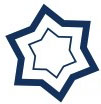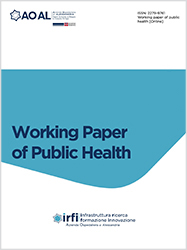Labiopalatoschisis diagnostic and therapeutic pathway in the A.O. Alessandria

Accepted: 11 July 2016
All claims expressed in this article are solely those of the authors and do not necessarily represent those of their affiliated organizations, or those of the publisher, the editors and the reviewers. Any product that may be evaluated in this article or claim that may be made by its manufacturer is not guaranteed or endorsed by the publisher.
Introduction: The project "labiopalatoschisis" was born in 2003 in Alessandria and was realized with the official opening of an outpatient clinic L.P.S. involving not only doctors, surgeons, health workers of our ASO but also dentists who lend their work as volunteers. Also in 2003 some parents founded the Association Labiopalatoschisi Alessandria "A smile for them" with the intent to support families and young patients in the challenging diagnostic and therapeutic path that continues throughout the age of development. Methodology: Since this pathology involves different organs, apparatuses and functions, it has been adopted the formula of therapeutic day-hospital that allows collegial evaluations (surgical, dental, otolaryngological, speech therapy and related specialists) in a single structure and in a single access. Parents become an integral part of this process and a "therapeutic alliance" is formed with them so that they can complete the therapeutic process, committing to collaborate in the care provided and to respect the evaluation and intervention times. From the birth of the little patient, family members are involved with counseling and targeted information material. In the LPS outpatient clinic, not only children operated on at our facility or resident in the area are followed, but also children operated on or coming from other hospitals, maintaining contact with the operators of the centers of origin. Children are taken care of by the outpatient clinic from the moment of birth until the age of 20. Results: Since 2009 at the outpatient clinic there have been 3139 accesses for postoperative secondary care, 940 visits, 131 surgeries on new cases. The young patients have been able to enjoy interdisciplinary interventions and evaluations (surgical, otolaryngological, dental-orthodontic, speech evaluation and counseling, any related specialist visits e.g. cosmetic and reconstructive surgery, auxological, psychological, neuropsychiatric) in a single access and a single facility. The services are free of charge including dental-orthodontic services provided by volunteer dentists. The ease of access ensures continuity of care, motivating and encouraging young patients and their families to the completion of the therapeutic path preventing the malformation present at birth becomes a handicap in adulthood. Conclusions: Cleft palate has an incidence in Italy of about one case per 1000 births. It is a malformation that can involve upper lip, gingiva, hard and soft palate and nose. It is frequently associated with syndromes (e.g. velocardiofacial syndrome, Pierre_Robin syndrome, chromosomal deletion syndrome (chromosome 22 Q), Charge syndrome). The cleft lip and palate determines problems of functional and aesthetic nature; a child affected by this pathology has enormous difficulties in feeding himself, in speaking. The complete recovery of the malformation usually covers several years and may also require numerous surgical interventions. Being part of complex syndromic pictures, may also be present malformations to other systems and organs and cognitive delay. It is therefore essential that interdisciplinary guaranteed by the outpatient clinic Labiopalatoschisis that has allowed many young patients to become adults "healthy".
PAGEPress has chosen to apply the Creative Commons Attribution NonCommercial 4.0 International License (CC BY-NC 4.0) to all manuscripts to be published.

 https://doi.org/10.4081/wpph.2016.6691
https://doi.org/10.4081/wpph.2016.6691




